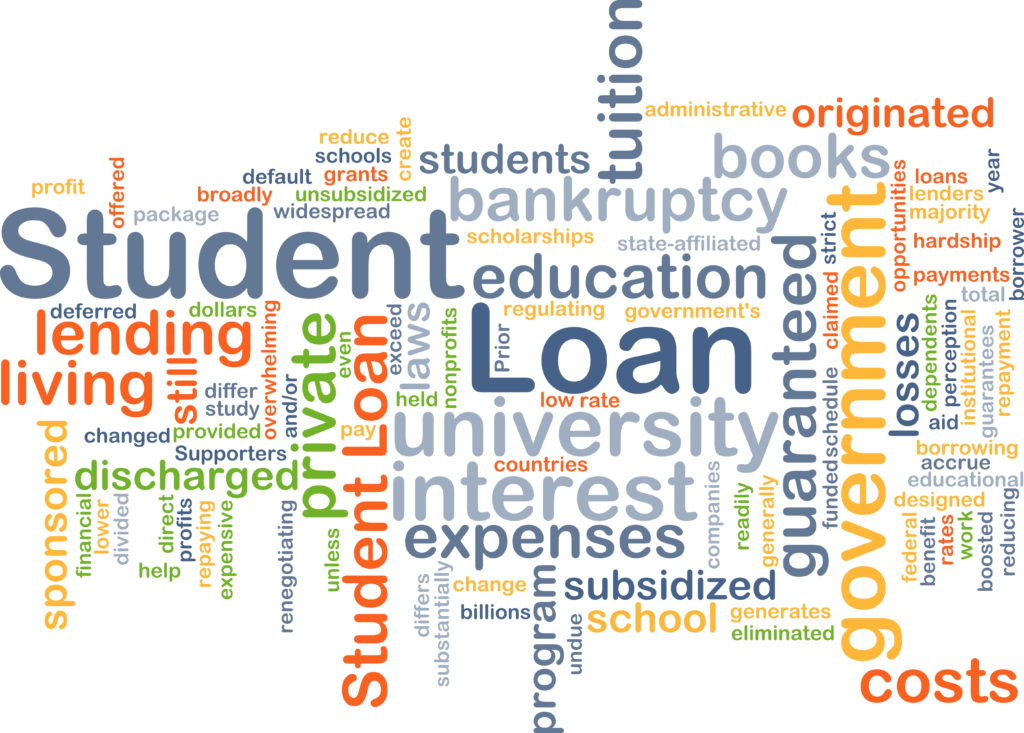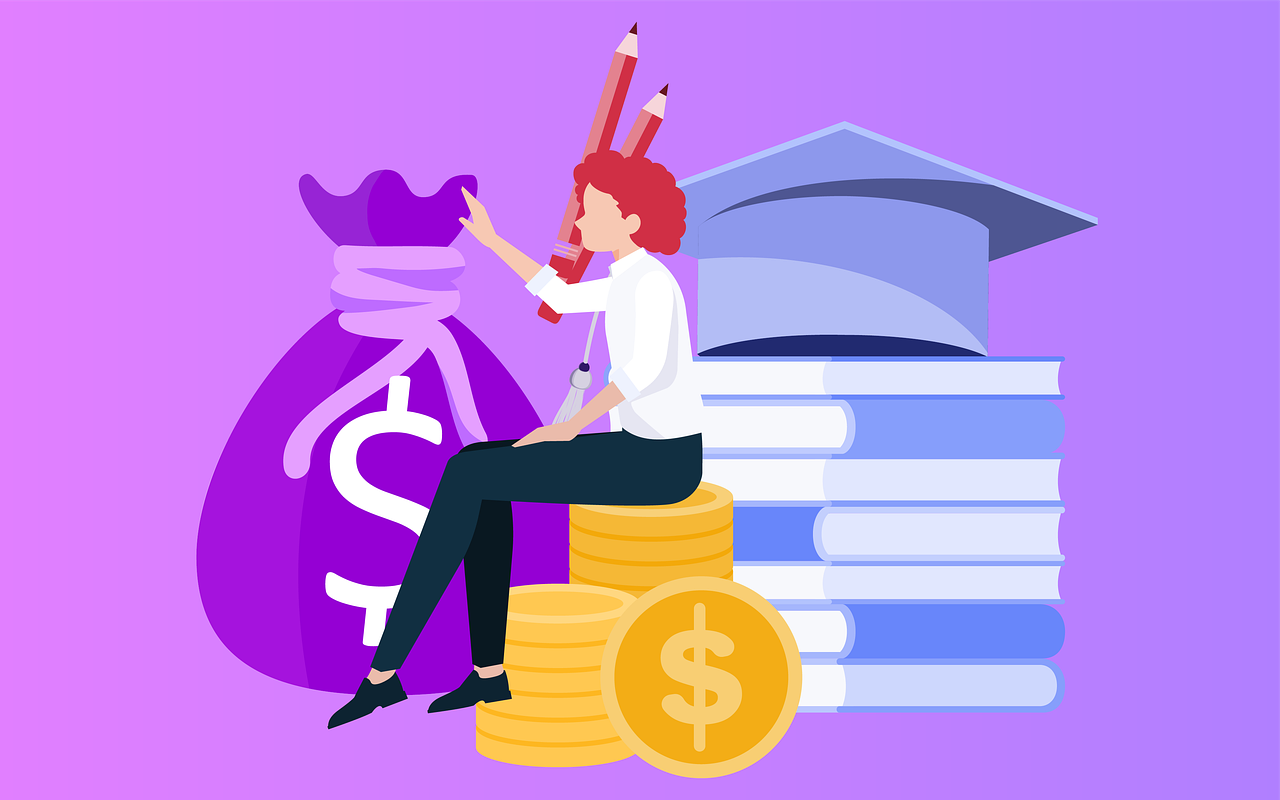Student loans are a significant expense for most people. Therefore, it is essential to understand the terminology and what you can do to help pay them off as quickly as possible. This article will talk about some of the definitions that borrowers should know before they take on their first loan.
What are student loans?
A borrower has several options when repaying their loans, including deferments and income-driven repayment plans (IDR) such as Pay As You Earn (PAYE). In addition, federal student loan borrowers are offered assistance if their family’s financial situation changes during school: payment reductions based on unemployment or increased enrollment, among other things.
Public service forgiveness may be available after 120 qualified payments under certain conditions. These are examples of ways students can make paying back more manageable while still getting valuable education benefits from the federal government.
What are the types of student loans?
Stafford Loans
These loans come in both subsidized and unsubsidized varieties. The U.S. Department of Education pays the interest on subsidized loans while you’re in school at least half-time, during your grace period, and deferment. On unsubsidized loans, you’re responsible for paying all the interest that accrues, from when the loan is disbursed until it’s paid in full.
Perkins Loans
These are low-interest loans for students with exceptional financial needs. The school awards them to students who demonstrate significant financial need and have no other options for financing their education.
PLUS Loans
These loans are available to parents of dependent students and cover the total cost of attendance, less any financial aid received.
Private Student Loans
These are nonfederal loans made by banks, credit unions, or other lenders. They should be used as a last resort because they generally have higher interest rates than federal loans and lack the repayment flexibility of federal student loans.
They are not guaranteed or subsidized by the government, so if you default on your loan, there is nothing that will prevent the lender from suing you to recover the money it has lost due to lending to you.
How do you apply for a loan?
Parent PLUS Loans and Grad PLUS Loans are federal. Private lenders offer parent plus loans, but the government does not subsidize them. This means that interest begins accruing from the moment you take them out, even during your grace period. That can add up to a lot of extra costs!
A private student loan is a loan made by a bank, credit union, or another lender. Private loans should be used as a last resort because they generally have higher interest rates than federal loans and lack the repayment flexibility of federal student loans. To apply for a private student loan, you’ll need to provide information about yourself, your school, and your cosigner (if you have one).
What are the payment options when paying your loans?
The most common repayment plans for federal student loans are Standard, Graduated, Income-Based Repayment (IBR), Pay As You Earn Plans (PAYE), and Revised Pay As You Earn Plan. Student loan payments are typically due at the end of every month, although you can make payments weekly if you want.
Standard
The standard plan is a good choice if you can afford your monthly payment and you want to pay off your loan as quickly as possible. Prices are fixed and will remain the same amount each month for the life of the loan.
Graduated
The graduated plan is a good choice if you can’t afford your monthly payment on the standard plan. Your payments start small and increase every two years until they reach your maximum payment amount.
Income-Based Repayment (IBR) Plans
These plans are available to borrowers with high debt relative to their income and low earnings. Your monthly payments will be capped at a certain percentage of your discretionary income, which is the difference between what you earn each month and 150% of the poverty guideline for your family size.
Pay As You Earn Plans (PAYE)
The PAYE plan is available to borrowers who took out their first loan on or after October 2007 and have a high debt relative to their income. Your monthly payments will be capped at a certain percentage of your discretionary income, which is the difference between what you earn each month and 150% of the poverty guideline for your family size.
Revised Pay As You Earn Plan (REPAYE)
The REPAYE plan was created in December 2015 to be an improved version of PAYE. Under this plan, eligible borrowers only have to make payments when they earn more than 150% of the poverty guideline for their family size. This plan is also available to borrowers who took out their first loan on or after October 2007.
How to apply for a student loan?
To apply for a Federal Student Loan, you will need to complete the Free Application for Federal Student Aid (FAFSA). You can get started by visiting fafsa.ed.gov. The FAFSA application is used to determine your eligibility for all types of federal financial aid, including student loans.”
“There are two ways to borrow money from the government to pay for college: through school-based loans and direct loans from the U.S. Department of Education.
School-based loans are offered through the school you’re attending. In addition, the U.S. Department of Education provides direct loans, which come with various benefits like fixed interest rates and no loan origination fees.”
“The main difference between these two types of loans is who provides them: the school or the U.S. Department of Education. School-based loans usually have a higher interest rate than direct loans, and they also come with origination fees.”
“Direct loans are available to students attending any school, including vocational and technical schools. You can borrow up to $20,500 per year in undergraduate direct loans and up to $40,500 per year in graduate direct loans.”
“There are a few different types of direct loans: subsidized and unsubsidized Stafford Loans, PLUS Loans, and Perkins Loans. The main difference between these loans is the interest rate. Subsidized Stafford Loans have a fixed interest rate of only 0.05
What are the pros and cons of federal vs. private loans?
There are several types of student loans available to borrowers. The most common are federal and private loans. Federal loans are offered through the government, while banks or other lending institutions provide private loans. Each type of loan has its pros and cons.
Federal student loans have several benefits, including:
- Fixed interest rates
- No origination fees
- Deferment and forbearance options
Private student loans typically have higher interest rates than federal loans, and they also don’t offer as many repayment options. However, private loans can be helpful for students who need more money than what is available in the federal loan program. Private lenders may also offer scholarships or grants to help reduce the cost of college.
What are the different loan forgiveness programs?
Student loan borrowers have the option to have their loans forgiven. Many forgiveness programs are available, but they can be difficult to understand and apply for. A student loan debt consolidation specialist can help borrowers understand and apply for the forgiveness programs available to them.
There are many different student loan debt consolidation programs available, including government-sponsored and private consolidation loans. Borrowers should research all of their options before choosing a program. The best way to do this is by speaking with a student loan debt consolidation specialist.
Income-driven repayment plans.
One form of student loan forgiveness is income-driven repayment plans. These plans allow a borrower’s monthly payment amount to be adjusted based on how much money that person makes.
Public service loan forgiveness.
Another common form of student loan forgiveness is public service loan forgiveness. This program forgives the loans of borrowers who work in a qualifying public service job for ten years.
Student loan discharge programs.
There are also several student loan discharge programs available. These programs allow borrowers to have their loans forgiven if they meet specific qualifications. These programs include Teacher Loan Forgiveness and the Perkins Loan Cancellation program.
Student loan consolidation.
To lower your monthly payment amount, one way to consolidate your student loans. Student loan consolidation combines all of a borrower’s loans into one new loan. This new loan typically has a lower interest rate and a more extended repayment period.
Student loan refinancing.
Another way to lower your monthly payment amount is through student loan refinancing. Student loan refinancing involves taking out a new private loan that pays off the other loans in full. The interest rate on this type of consolidation is often lower than those offered by federal government programs, but the repayment period is typically shorter.
Student loan debt consolidation companies.
Many student loan borrowers are encouraged to consider working with a student loan debt consolidation company to consolidate their loans, refinance their loans or receive some other type of financial assistance. A skilled and trustworthy student loan specialist can help you find the best options for your particular situation.
Student Loan Debt Consolidation Specialist.
There are many different student loan debt consolidation programs available, including government-sponsored and private consolidation loans. Borrowers should research all of their options before choosing a program. The best way to do this is by speaking with a student loan debt consolidation specialist who can help you select the program best suited to your needs.
In conclusion
Student loans are an essential part of financing your education. Therefore, it is crucial to understand the different types of student loans and their associated terms and conditions. By understanding the different kinds of student loans available, you can decide which loan is best for you.
If you have any questions about student loans, be sure to consult with a financial advisor or lender. They will help guide you through the process and answer any questions that you may have.















